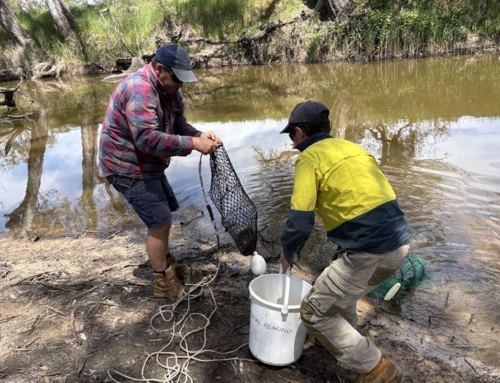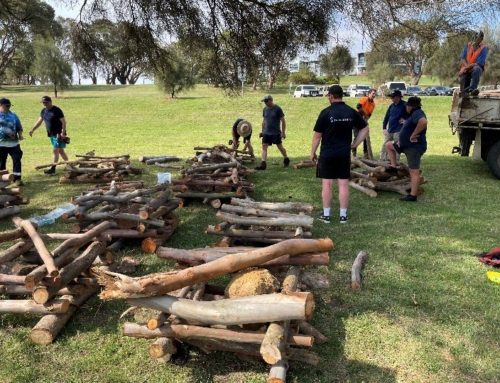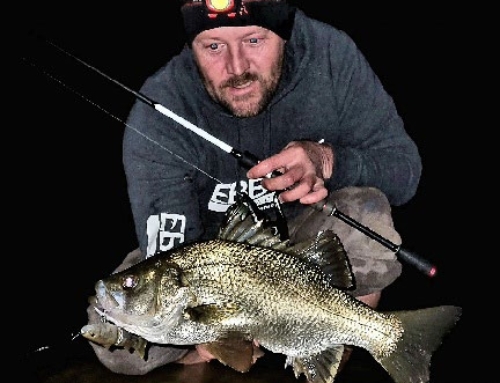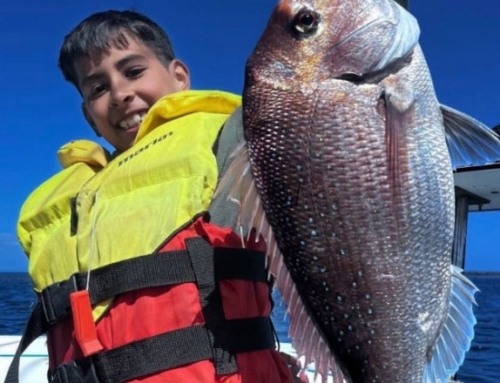There is no doubting that jigging is one of the more high octane and energy sapping styles of fishing today. Jarrod Day shares his knowledge on this art.
This highly effective technique of jigging requires a fair level of fitness, with some anglers pushing their limits by enduring a gym training programs prior to embarking on such a trip.
For the most part, finding fish can be a challenge in itself but it is the jigs that are the main factor for success. The sport of jigging can be used to catch a variety of species from Samson fish, kingfish, tuna to snapper and even deep dwellers such as blue eye cod or Hapuka. Whilst rare, the odd marlin has also been known to take a high speed jig.
The jigging technique employed may only be as simple as free spooling a jig to the bottom before retrieving it at high speed – however it is the type of jig used in varied scenarios which can dictate whether or not it is going to be eaten.
 JIG STYLES
JIG STYLES
At a glance, jigs to the untrained eye can look quite similar, and although they appear to be simply flashy pieces of metal there are in fact large variances. Jigs, whilst being available in a wide range of styles, actually fit into two main categories. These are tail weighted and centre weighted. Broadly speaking they each have distinct attributes which dictates their usage in a given situation.
Tail weighted jigs are those that are shaped with more weight towards the bottom end of the jig. Tail weighted jigs tend to fall through the water quite fast enabling the angler to get the jig to the strike zone quicker. These jigs are more suitably used in deeper water beyond 100 meters and also where there is current to contend with. Tail weighted jigs are also an advantage when it is windy. The fast sinking action of the jig will allow the angler to continue to fish almost vertically rather then having an acute angle on the line which can impede the jigs action.
Centre weighted jigs have the majority of their weight in the middle or belly of the jig. This enables them to fall sideways or in a flutter motion on their way down. Centre weighted jigs are available in a wide range of sizes with the shorter wider styles recommended for fishing shallower water. Having a slower sinking rate compared to tail weighted jigs allows them to stay in the strike zone for longer periods. Centre weighted jigs can still be used in deeper water but anglers must be aware that they will take longer to reach the bottom. Ideally, a longer thinner version would be recommended in this situation.
There are also more subtle variations within the main types of each jig which can also produce different actions. In the moulding process, grooves, ridges and slices cut into the metal body can cause a jig to flutter or slice through the water differently creating more erratic actions which can in turn encourage fish to bite.
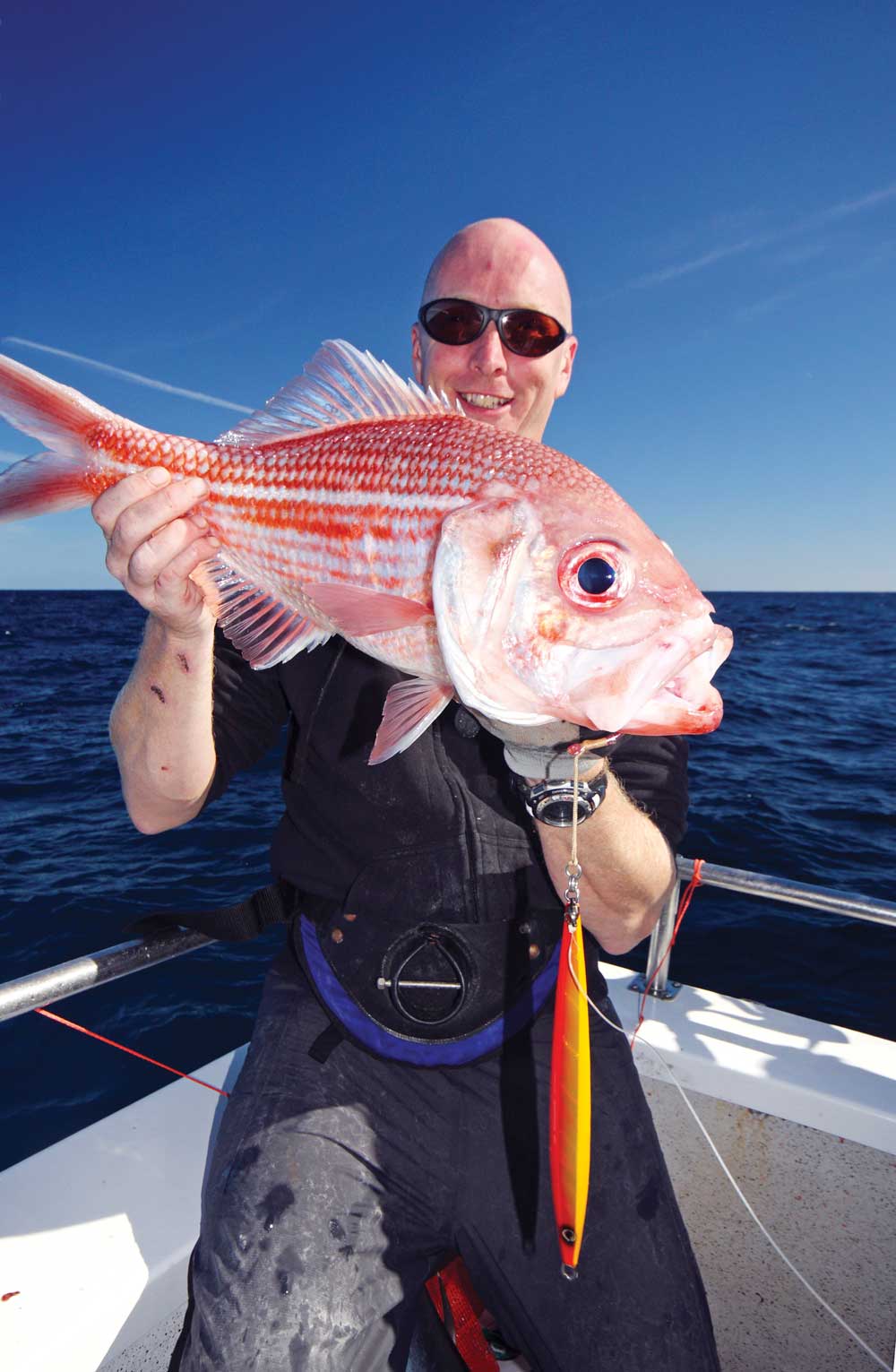
Reef fish are also partial too eating jigs, you never know what you’ll pull up next.
 CHOOSING A COLOUR
CHOOSING A COLOUR
Colour choice is always a confusing task but all in all it really comes down to a personal preference. In saying that, if you’re anything like myself then you tend to use colours you have had success with in the past. I have my so called ‘go to’ colours and tend to only change when a bite is hot, purely to determine if I can perceive any change in bite behaviour. Most of the time, in my experience, colour has played no part.
When selecting a jig, my main ‘go to’ colours depend on what baitfish or small reef fish maybe in the area. For instance, while jigging Samson fish some years ago, we began hooking small swallow tail nannygai. Being pink in colour, we changed our jigs to pink colours and as a result we had success. Jigging for dogtooth tuna along the Great Barrier Reef, I found myself in a similar scenario using fusilier coloured jigs in an attempt to catch tuna to over 80 lb, which at the time seemed logical as they were feeding on fusilier schools. The old saying ‘match the hatch’ still applies when fishing the blue water and where ever possible stick to blue, silver, pink, green and white colours. This type of selection can cover a wide range of baitfish species and tend to have no problem in being devoured.
Another factor to look for when purchasing a jig is weather or not it is going to be used in deeper water. Pink or red coloured jigs are the first colour to disappear in the colour spectrum when placed under water followed by orange, yellow, green and blue. Pink and red colours disappear at around 8 meters so if you’re jigging in 60 meters of water, the question has to be whether or not your jig is being seen. This is why I purchase jigs that also contain a lumo coloured belly strip or have a lumo eye on the jig. At great depths the lumo will still be visible, much to the same effect that the bioluminescence is seen by fish on squid and other fish species.
WHICH WEIGHT
Weights are always a big factor when jigging and whilst you may require a range of jigs you will also require a range of weights. Jig weights will depend on the depths being fished as you will never know where the fish are holding until you are out on the water. Prior knowledge to a local fishing location will aid with this but if you’re on a trip or headed to new ground, you will need to be versatile in the selection and subsequent use of the correctly weighted jig.
 Whilst there are differing methods used by others in selecting the appropriate jig weight, I find using simple rules a proven strategy. Tide strength, drift speed and depth will all be contributing factors in dictating what weight is required on any given day. Firstly I’ll analyse the depth and choose a jig, however I might have to up the weight and go heavier if the current is running or the wind is howling. For instance, in 60-70 meters of water, I would normally use a 200-250 g jig but with wind and current I would increase the weight and use a 300 or 350 g jig.
Whilst there are differing methods used by others in selecting the appropriate jig weight, I find using simple rules a proven strategy. Tide strength, drift speed and depth will all be contributing factors in dictating what weight is required on any given day. Firstly I’ll analyse the depth and choose a jig, however I might have to up the weight and go heavier if the current is running or the wind is howling. For instance, in 60-70 meters of water, I would normally use a 200-250 g jig but with wind and current I would increase the weight and use a 300 or 350 g jig.
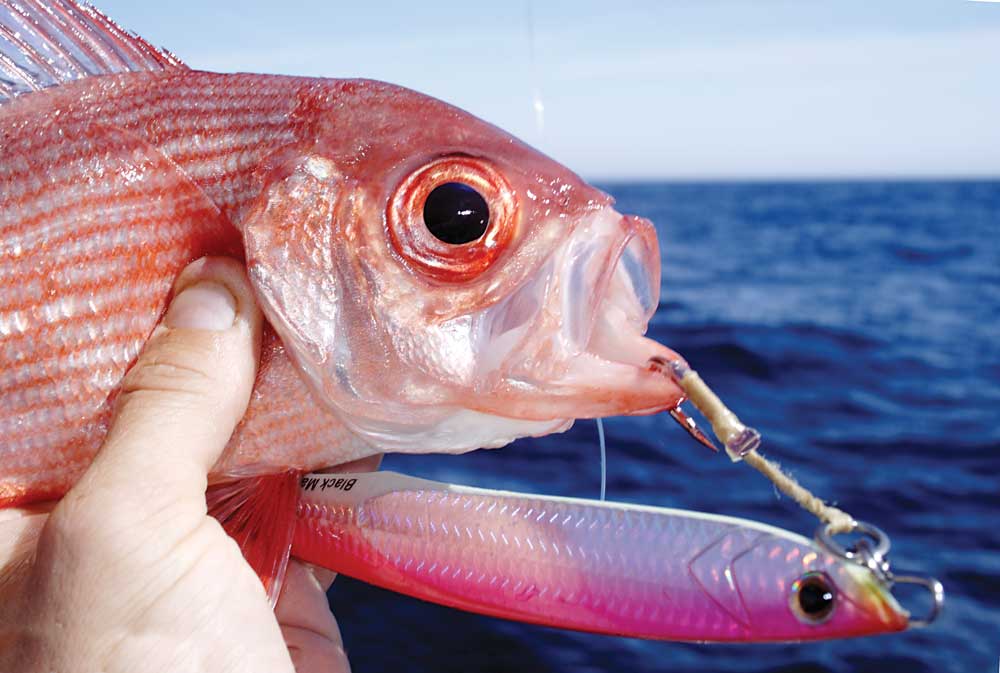
Should you catch a small baitfish or other species of fish in the vicinity of predatory fish, it pays to use a similar colour as they may be feeding on them.
The entire jigging process is aimed at keeping the jig working vertically which is why drift speed, current and a jig which is too light can impede that movement and cause the jig action to be limited. Drift speed can also be altered by using a drogue or sea anchor. These ‘parachute’ type anchors can slow the boats drift immensely allowing you to continue to use the lighter jigs.
For situations where there is little current in 60-80 meters of water, my recommendation is to use a weight around 200 g, 80-100 meters a 300 g weighted jig, 100+ meters I would use a 400 g jig. At the end of the day, it all comes down to commonsense and as previously mentioned you be required to change weights to suit the environment being fished.
 Jig weights may also be selected based on the tackle you’re fishing with. If you have a light outfit for targeting smaller fish, then you will require lighter weighted jigs: heavier weighted jigs won’t perform correctly and you will find the rod absorbing the jigs action. On the other hand, a jig that is too light will also under perform, thus not enticing a fish to strike. It is imperative that you select the right weighted jigs for the right outfit, depths fished and size of fish being targeted. Once this is all in place your on your way to success.
Jig weights may also be selected based on the tackle you’re fishing with. If you have a light outfit for targeting smaller fish, then you will require lighter weighted jigs: heavier weighted jigs won’t perform correctly and you will find the rod absorbing the jigs action. On the other hand, a jig that is too light will also under perform, thus not enticing a fish to strike. It is imperative that you select the right weighted jigs for the right outfit, depths fished and size of fish being targeted. Once this is all in place your on your way to success.
In summary to select weights properly you’ll need to observe water depth, tide strength, drift speed, weather conditions and take into account the tackle you’re using. Combine these factors and you should have a fairly educated idea as to your target jig.
SIZE MATTERS
Another factor in choosing the right jig is its length. While you may be required to use a 300 g jig, these can be available from as small as 10cm in length to a whopping 50 cm or longer. Dogtooth tuna are one such species that’s fussy on jig size. Most of the time, they feed on quite small baits where a jig in the realm of 10-15 cm in a 300 g weight would be ideal. The jig size can be crucial when jigging so it pays to have a wide selection of jigs at your disposal. At different times, different species will favour different sized baits and it all comes down to being versatile. Being able to chop and change your jig size will benefit you in getting a fish to bite. This may take a few drops to work out that nothing favours one size used but vary your jig and you may find you have what they are after on that given day. Generally speaking however prefer to use jigs in a 200 g – 300 g weight which range in size from 10-20 cm. This length range seems to be the perfect size to get a strike from just about any fish around the country.

Jigging for tuna requires anglers to use smaller, slimmer style jigs. When angler’s hooks tuna on the troll, an angler should free-spool a jig below when the boat pulls up, this method is highly effective.
JIG RECOMMENDATIONS
One question I am constantly asked is which brand is better. I do favour the brands Black Magic and Duel. These two jig manufacturers differ quite substantially in their designs which for me has been the deciding factor in getting fish to strike in both fast and slow fishing sessions. With that said, I don’t think you should base your jig selection purely on brand: it is the weight, size, colour and design that should be considered. Some brands may have different colours and designs to others which an angler may like, but as with all lures available, some branded jigs are down right expensive. Personally, I don’t see the desire to be fishing with a lump of metal that exceeds $50 but some anglers prefer to spend this much. Basic jigs around the $20 mark work exceptionally well, whilst middle class jigs in the $20-$35 range tend to feature more realistic colours and better designs which do perform better than their cheaper cousins. At the end of the day, providing you can successfully work a jig, it shouldn’t matter which is used if the fish are on the bite. Should it be a tough days fishing and knowing the fish are there but they just won’t feed, then more expensive jigs may have that desired action to fire the fish up.
With a range of colours, sizes, designs and weights at your disposal to be able to adapt to the environment fished, I guess it all comes down to finding something that works for you and sticking to it. Jigging can be a complex fishing style but is highly effective for some of the most brutal fighting fish in blue water. As addictive and physical as it is, once you have the right jig in the strike zone you’ll be in for one heck of a battle.
Jarrod Day works at Tackleworld Cranbourne, is an accomplished fishing journalist and has been for the past 10 years. Jarrod is married with two children and resides in the foothills of the Dandenong Ranges. He has extensively fished throughout Queensland, New South Wales, Victoria, Tasmania, South Australia, Northern Territory as well as many international destinations. Having built his writing career over many years, Jarrod is endorsed by Yo-Zuri, L.Wilson, Black Magic, Spotters and Richter Lures.


